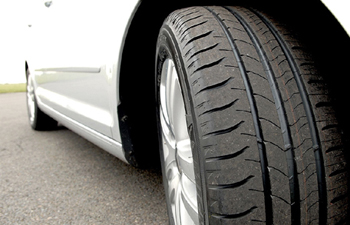Rolling Resistance Explained
Owning a car is a learning experience. You discover something new about that vehicle almost every time you go out on the road. There are some terms that are not too familiar but are worth knowing about. Rolling resistance happens to be one of them. The term refers to energy lost when the tire is rolling. It is influenced by the diameter of the tire, tire pressure, the tread, and the actual construction of the tire. Altering these factors can reduce rolling resistance. For example, if your tires have better pressure there’s less rolling resistance. How the tire is made impacts rolling resistance because the less material which is used, and the more flexible it is, the less energy is going to be lost.
Importance of rolling resistance
Okay, you may ask, what is the big deal? Do you have to worry about safety with rolling resistance and can it cause any problems? The importance of rolling resistance is how it affects fuel consumption. Rolling resistance impact on fuel consumption can be anywhere from 4 to 7%, and this is a fairly significant amount. If the tires you have exhibit a low rolling resistance, you are going to get better fuel efficiency. The prices of gasoline right now are down, and you can do even better if you were able to reduce the rolling resistance on your tires. If you’re able to reduce the rolling resistance by about a 10% reduction, you can have up to 2% improvement in your vehicle’s fuel economy. You can experience as much as 15% savings in fuel consumption for certain passenger cars. All manufacturers are increasingly more equipping the new models with low rolling resistance tires. Yet, there is no need to rush out and buy a new set of general tires.
Things to consider while buying new tires
Believe it or not, those new rubber wheels might generate more rolling resistance. It is because they have better tread and that translates into better grip and, consequently, additional resistance. If you are going to be buying new tires, then look at the width. Wider tires will generate lower rolling resistance because of the area. A smaller tire is going to have greater wear. You also can take a look at the surface design. There are tire brands that are designed to reduce rolling resistance. The Bridgestone Ecopia EP422 Plus is an example. This is intended for minivans and several models of popular sedan.
Advantages of choosing low resistance tires
Purchasing tires which are expressly made to combat rolling resistance do have some advantages. Consumer Reports has noted that the technology for low resistance tires is continuing to improve, and low rolling resistance is a feature being found in the newer brands. Michelin Tires is one of the best and the all-season, the winter, and the performance all-season tires from Michelin rank highly. The technology is expected to generate a fuel efficiency of anywhere from 1 to 4 miles per gallon, depending on the driving style of the car owner.
What that means to the average driver is highly significant. It is quite possible that the low resistance tires you purchase could generate a savings of close to $400 in gasoline costs over the life of the brand of tire you purchased. When you think about it, that is enough to buy the next set of low rolling resistance tires.
Have better ride with low resistance tires
You can reduce rolling resistance by taking better care of your old tires. They do not have as much tread and so you’re starting out with a little advantage. It is important to maintain the proper tire pressure for those old tires. If you do, the rolling resistance is reduced to the point where you have some real fuel efficiency. What is interesting is that a tire that has low rolling resistance will also produce a better ride because small bumps are better absorbed by the tires.
Proper air pressure is essential
The right air pressure is going to be important whether you buy a  rolling resistant tire or maintain your old ones. It has always been a rule of thumb that properly inflated tires increase fuel efficiency. It goes up a notch more when you consider rolling resistance. Consumers today want to be prudent as far as fuel costs are concerned. This means that even the small things are going to be important. Keeping a close watch on rolling resistance can save you money at the pump.
rolling resistant tire or maintain your old ones. It has always been a rule of thumb that properly inflated tires increase fuel efficiency. It goes up a notch more when you consider rolling resistance. Consumers today want to be prudent as far as fuel costs are concerned. This means that even the small things are going to be important. Keeping a close watch on rolling resistance can save you money at the pump.




